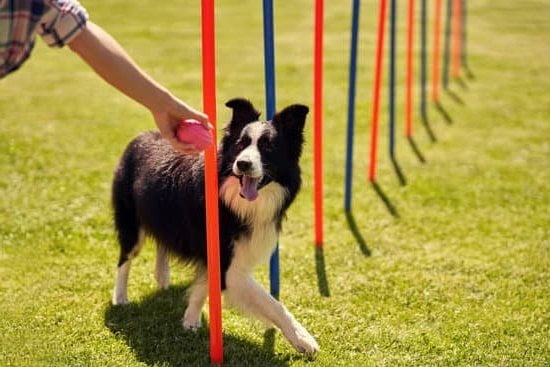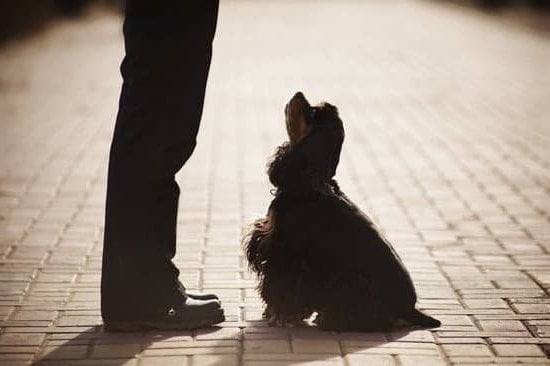Is your puppy constantly barking at other dogs? Have you been struggling to find a solution to this behavior? In this article, we will explore effective training techniques to help you teach your puppy to not bark at other dogs.
Understanding the root cause of your puppy’s barking is essential for implementing the right training approach. From the importance of socialization and obedience training to positive reinforcement and desensitization methods, we will cover everything you need to know to address this common issue.
Socialization and obedience training are crucial for a puppy’s development, and they play a significant role in shaping their behavior towards other dogs. Positive reinforcement techniques can be used to modify your puppy’s behavior, while desensitization and counter-conditioning methods can help reduce their barking. We will also discuss the use of distractions and redirecting your puppy’s attention when encountering other dogs, as well as specific training exercises to promote calmness and focus in their presence.
Fear or anxiety issues may also contribute to your puppy’s barking at other dogs, so addressing these underlying emotions is important in the training process. Consistency and patience are key factors in successfully training your puppy to not bark at other dogs, and we will provide tips on how to maintain these qualities throughout the training journey.
By understanding the root cause of your puppy’s behavior and implementing effective training techniques, you can work towards reducing their barking and fostering positive interactions with other dogs.
Importance of Socialization and Obedience Training for Puppies
Understanding the importance of socialization and obedience training for puppies is crucial for addressing their behavior, including barking at other dogs. Socialization plays a key role in helping puppies develop positive interactions with other animals and people, ultimately reducing their likelihood of exhibiting fear-based behaviors such as excessive barking. Obedience training, on the other hand, provides puppies with the necessary skills to follow commands and exhibit self-control, which are essential for managing their behavior in various situations.
Puppies that have not been properly socialized may feel anxious or threatened when encountering other dogs, leading to defensive barking as a reaction. With appropriate socialization, puppies can learn to feel more comfortable and secure when interacting with other canines, reducing the likelihood of barking excessively. Obedience training also teaches puppies to focus on their owners and respond to commands even in distracting environments, which can help prevent reactive behavior like barking at other dogs.
Implementing positive reinforcement techniques during socialization and obedience training can effectively modify your puppy’s behavior towards other dogs. By rewarding your puppy for calm and non-reactive behavior around other dogs, you are encouraging them to associate positive experiences with these encounters. This can help your puppy become more relaxed in the presence of other dogs and lessen their barking tendencies over time.
| Importance of Socialization | Obedience Training Benefits |
|---|---|
| Crucial for developing positive interactions with other animals and people. | Provides necessary skills for following commands and exhibiting self-control. |
| Helps reduce fear-based behaviors such as excessive barking. | Teaches puppies to focus on owners and respond to commands in distracting environments. |
Positive Reinforcement Techniques for Behavior Modification
Using Rewards and Praise
One of the most effective ways to modify your puppy’s behavior is through positive reinforcement. This involves rewarding your puppy when they exhibit the desired behavior, in this case, remaining calm around other dogs. Whenever your puppy reacts calmly to another dog, be sure to praise them and offer a tasty treat as a reward. This will help your puppy associate positive experiences with the presence of other dogs.
Clicker Training
Clicker training can also be an effective method for behavior modification in puppies. By using a clicker to mark the moment when your puppy behaves appropriately around other dogs, you can clearly communicate what actions are being rewarded. Pairing the click with a reward such as a treat or praise will help reinforce the desired behavior.
Consistency and Patience
It is important to be consistent and patient when using positive reinforcement techniques to modify your puppy’s behavior. Training takes time and requires repetition, so it’s essential to consistently reward and praise your puppy for calm behavior around other dogs.
Additionally, it’s important to remain patient and understanding as you work with your puppy to reduce their barking at other dogs. With time and dedication, positive reinforcement techniques can be highly effective in modifying your puppy’s behavior.
Desensitization and Counter-Conditioning Methods for Reducing Barking
Desensitization and counter-conditioning are effective methods for reducing your puppy’s barking at other dogs. These techniques work by changing your puppy’s emotional response to the trigger that causes them to bark, in this case, other dogs. By exposing your puppy to the trigger in a controlled and positive way, you can help them learn to remain calm and relaxed instead of barking.
Gradual Exposure
One desensitization technique involves gradually exposing your puppy to other dogs from a distance where they can see or hear them but are still calm enough not to bark. Over time, you can slowly decrease the distance between your puppy and other dogs, always ensuring that they remain calm and providing plenty of positive reinforcement when they do.
Counter-Conditioning
Counter-conditioning involves pairing the sight or sound of other dogs with something positive for your puppy, such as treats or praise. This helps your puppy form a positive association with other dogs rather than seeing them as a potential threat that triggers barking. Whenever your puppy remains calm in the presence of other dogs, be sure to reward them with their favorite treats or toys.
It’s important to note that desensitization and counter-conditioning require patience and consistency. Rushing the process or exposing your puppy to situations where they bark excessively can actually make the problem worse. It’s crucial to take things slow and always end training sessions on a positive note, even if it means taking just a few steps closer to another dog without any reaction from your puppy.
Using Distractions and Redirecting Your Puppy’s Attention When Encountering Other Dogs
When you encounter other dogs during walks or visits to the dog park, it’s important to have a plan in place to redirect your puppy’s attention away from barking. One effective method is to use distractions such as treats or toys to divert your puppy’s focus.
Bring along your puppy’s favorite treats or toys and use them to capture their attention when they start to bark at other dogs. You can also use a cheerful and upbeat tone of voice to get your puppy’s attention and encourage them to focus on you instead of the other dogs.
Another useful technique for redirecting your puppy’s attention is to engage them in basic obedience commands such as “sit” or “down”. Practice these commands regularly during training sessions so that your puppy becomes familiar with them. When you encounter other dogs, give the command for your puppy to sit or lie down, and reward them with praise and treats for following through. This not only redirects their focus but also reinforces positive behavior.
It’s important to note that consistency is key when using distractions and redirection techniques. It may take time for your puppy to learn how to respond appropriately, so be patient and continue practicing these methods during walks and socialization outings. With consistent training and positive reinforcement, you can effectively teach your puppy to remain calm and attentive in the presence of other dogs without resorting to barking.
| Distraction Technique | Redirected Attention |
|---|---|
| Use treats or toys | Capture the puppy’s focus |
| Engage in basic obedience commands | Familiarize with “sit” or “down” |
| Consistency is key | Patiently practice methods during walks |
Training Exercises to Teach Your Puppy to Remain Calm and Focused in the Presence of Other Dogs
When training your puppy to remain calm and focused in the presence of other dogs, it is important to use a combination of positive reinforcement techniques, desensitization, and obedience training. Here are some training exercises that can help your puppy learn to be well-behaved around other dogs:
1. **Socialization outings:** Take your puppy on regular socialization outings to expose them to various environments, including places where they are likely to encounter other dogs. This will help them become more comfortable and less reactive when they see other dogs while out on walks or at the park.
2. **Basic obedience commands:** Teaching your puppy basic obedience commands such as “sit,” “stay,” and “leave it” can be extremely beneficial in redirecting their attention away from other dogs and maintaining their focus on you.
3. **Classical conditioning:** Use classical conditioning techniques by pairing the sight of another dog with something positive, such as treats or praise. This will help your puppy form positive associations with seeing other dogs, ultimately reducing their urge to bark or become anxious.
Consistency is key in these training exercises. It is essential to practice these exercises regularly and remain patient as behavior modification takes time. Remember that each puppy learns at their own pace, so it is important to be understanding and encouraging throughout the training process.
Addressing Any Fear or Anxiety Issues Contributing to Your Puppy’s Barking
Puppies, like humans, can experience fear and anxiety when encountering new or unfamiliar situations. It’s important to address any underlying fear or anxiety issues that may be contributing to your puppy’s barking at other dogs. Here are some tips for helping your puppy overcome these issues:
1. **Identify the Trigger**: Take note of the specific situations or stimuli that trigger your puppy’s barking. Is it when they see a certain type of dog? Is it in a particular environment? Understanding the trigger can help you develop a targeted approach to addressing your puppy’s fear or anxiety.
2. **Gradual Exposure**: Once you’ve identified the trigger, work on gradually exposing your puppy to it in a controlled and positive manner. For example, if your puppy is fearful of small dogs, start by introducing them to calm and well-behaved small dogs in a neutral setting.
3. **Positive Reinforcement**: Use treats, praise, and rewards to reinforce positive behavior when your puppy is around other dogs. This will help create positive associations with the presence of other dogs and reduce their fear or anxiety over time.
By addressing any fear or anxiety issues contributing to your puppy’s barking, you can help them feel more comfortable and confident in the presence of other dogs. Remember that patience, consistency, and positive reinforcement are key components of this training process.
Tips for Consistency and Patience in Training Your Puppy to Not Bark at Other Dogs
In conclusion, training a puppy to not bark at other dogs requires understanding the root cause of the behavior and implementing consistent and patient training techniques. It is important to recognize that socialization and obedience training play a crucial role in modifying your puppy’s behavior. Positive reinforcement techniques can be effective in encouraging desirable behavior, while desensitization and counter-conditioning methods can help reduce barking in the presence of other dogs.
Using distractions and redirecting your puppy’s attention when encountering other dogs can also be beneficial in preventing excessive barking. Additionally, incorporating specific training exercises to teach your puppy to remain calm and focused in the presence of other dogs is key. Addressing any fear or anxiety issues contributing to your puppy’s barking is essential for successful behavior modification.
Consistency and patience are vital components of training your puppy to not bark at other dogs. It is important to remain dedicated to the training process and understand that it may take time for your puppy to fully adjust their behavior. By following these tips and being consistent with your efforts, you can help your puppy learn to remain calm and controlled when encountering other dogs, ultimately fostering positive interactions and reducing excessive barking.

Welcome to the blog! I am a professional dog trainer and have been working with dogs for many years. In this blog, I will be discussing various topics related to dog training, including tips, tricks, and advice. I hope you find this information helpful and informative. Thanks for reading!





